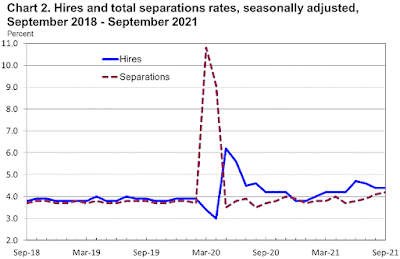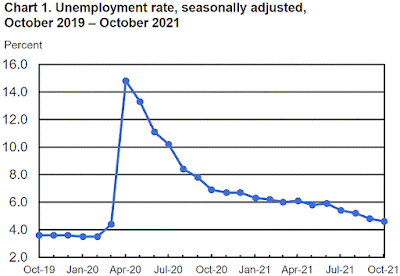Consumer Confidence Index (CCI) for November 2021
================
Predicted: 110.0
- Actual: 109.5
================
Previous Month (revised): 111.6
- Change from Previous Month: -1.882% (-2.1 points)
The "predicted" figure is what economists were expecting, while the "actual" is the true or real figure.
From Today's Report:
"...'Consumer confidence moderated in November, following a gain in October,' said Lynn Franco, Senior Director of Economic Indicators at The Conference Board. 'Expectations about short-term growth prospects ticked up, but job and income prospects ticked down. Concerns about rising prices -- and, to a lesser degree, the Delta variant -- were the primary drivers of the slight decline in confidence. Meanwhile, the proportion of consumers planning to purchase homes, automobiles, and major appliances over the next six months decreased. The Conference Board expects this to be a good holiday season for retailers and confidence levels suggest the economic expansion will continue into early 2022. However, both confidence and spending will likely face headwinds from rising prices and a potential resurgence of COVID-19 in the coming months.'..."
Every month, The Conference Board sends a questionnaire to 5,000 U.S. households. Survey participants are polled about their feelings regarding the U.S. economy, current and future, and about their own fiscal circumstances. On average, 3,500 participants complete and return the 5-question survey.
- The baseline "100" score for the CCI is associated with 1985 survey data.
When consumers feel good about the economy, they tend to do more spending, and vice versa.
Based in New York City, The Conference Board is a private,
not-for-profit organization with a mission to, "create and disseminate
knowledge about management and the marketplace to help businesses
strengthen their performance and better serve society."
The CCI is usually released on the last Tuesday of the month.
================
================
Labels: cci, Conference_Board, consumer_confidence, consumer_spending, consumers, Coronavirus, COVID-19, COVID19, Pandemic, soft_data, The_Conference_Board
|
--> www.FedPrimeRate.com Privacy Policy <--
> SITEMAP < |




















